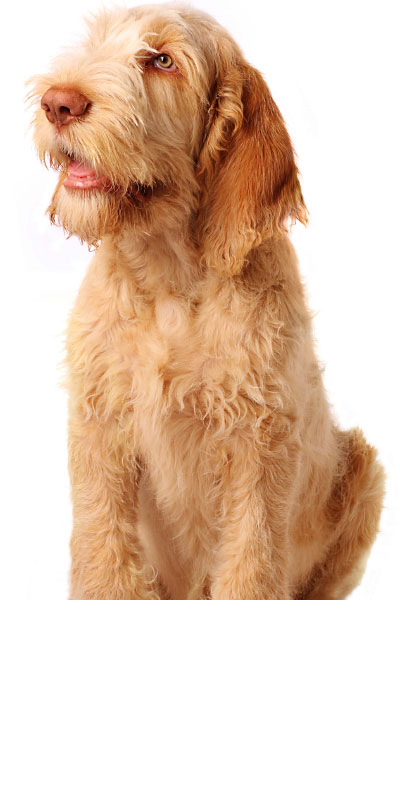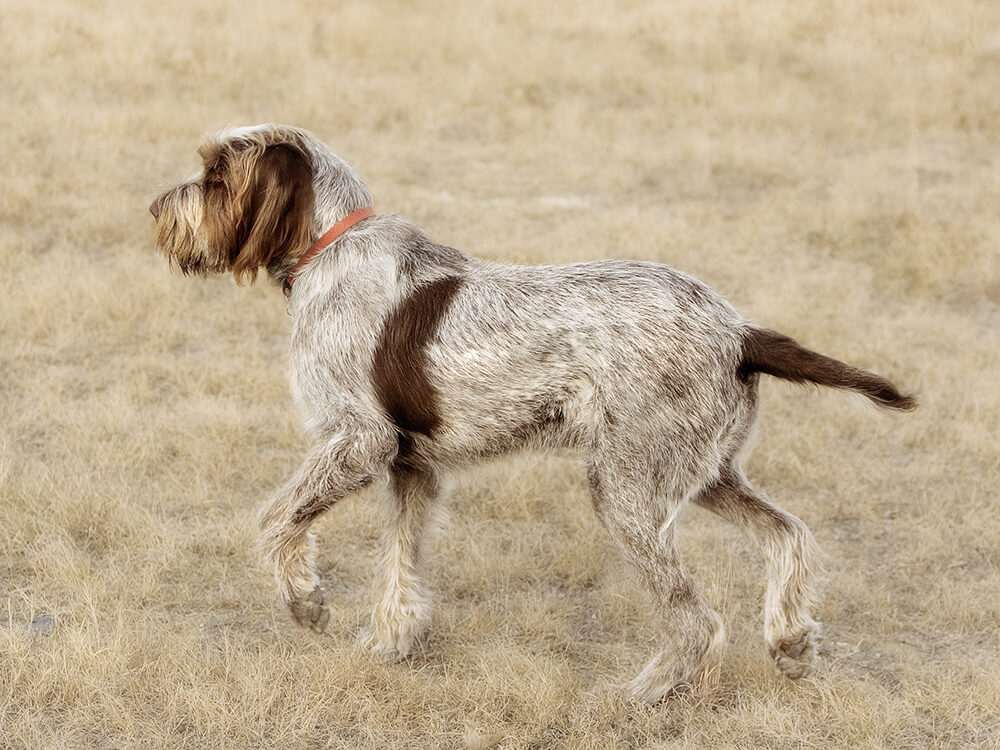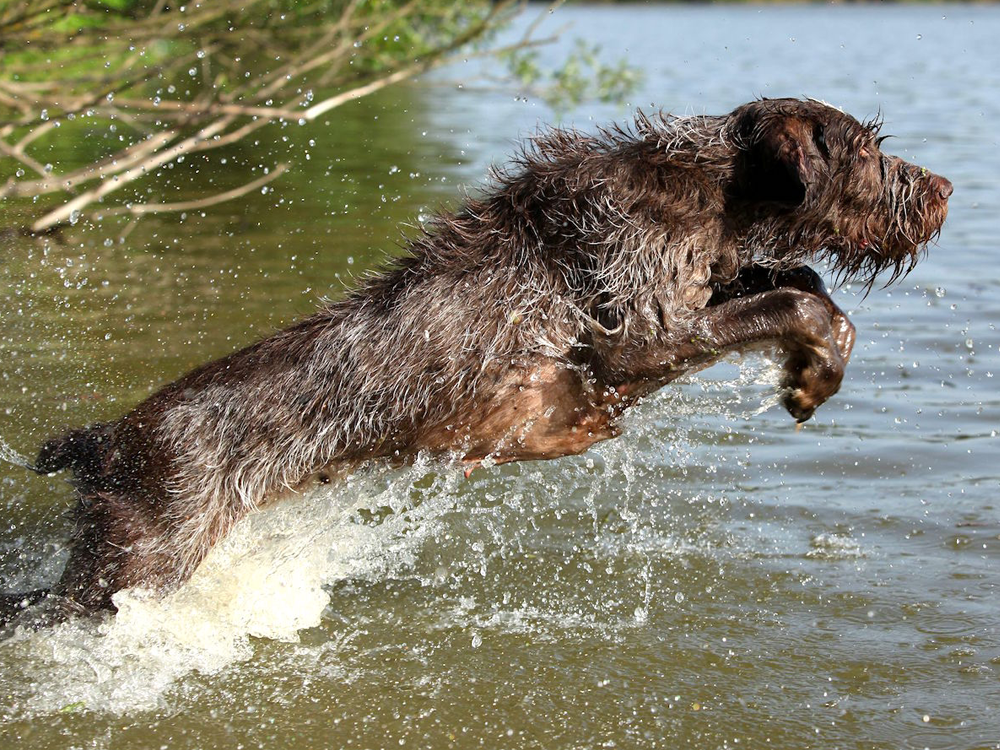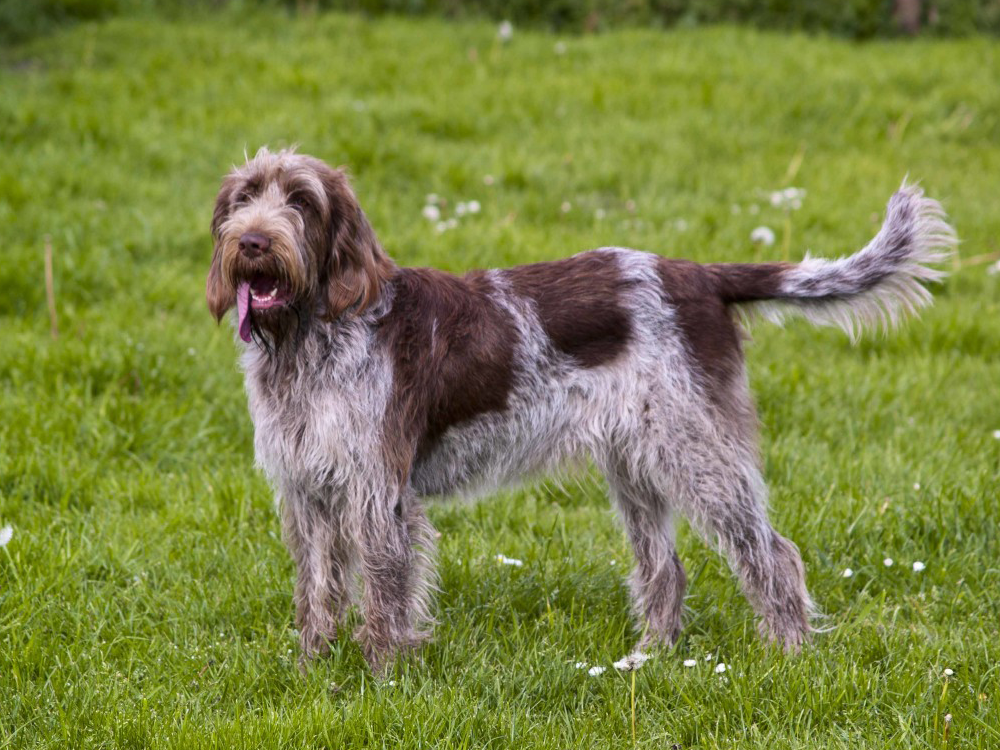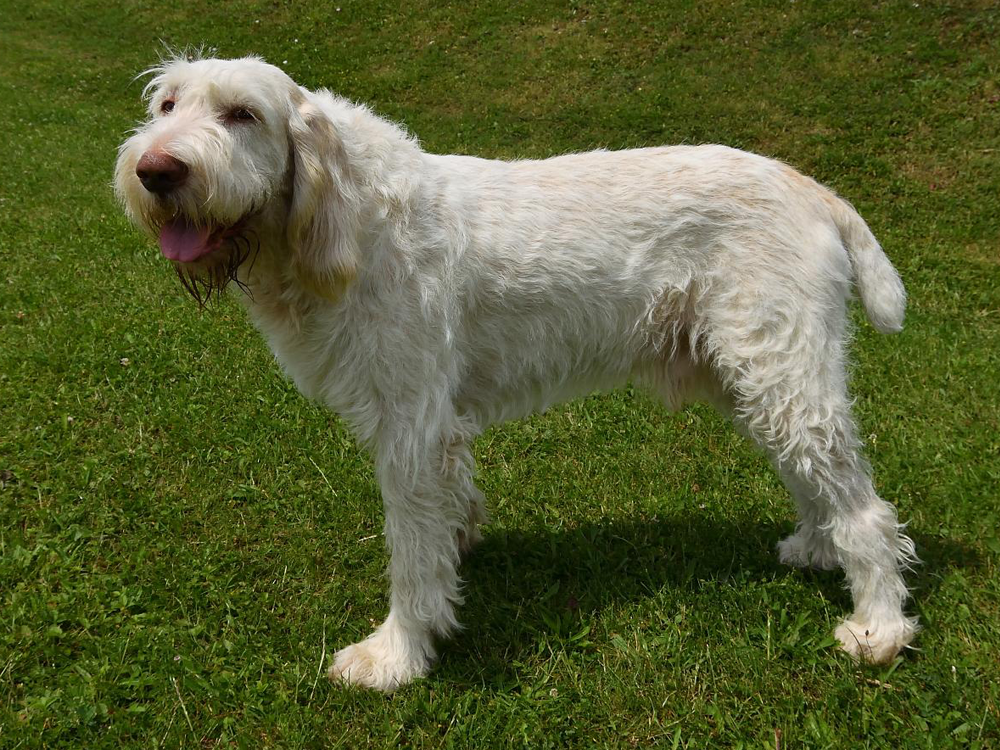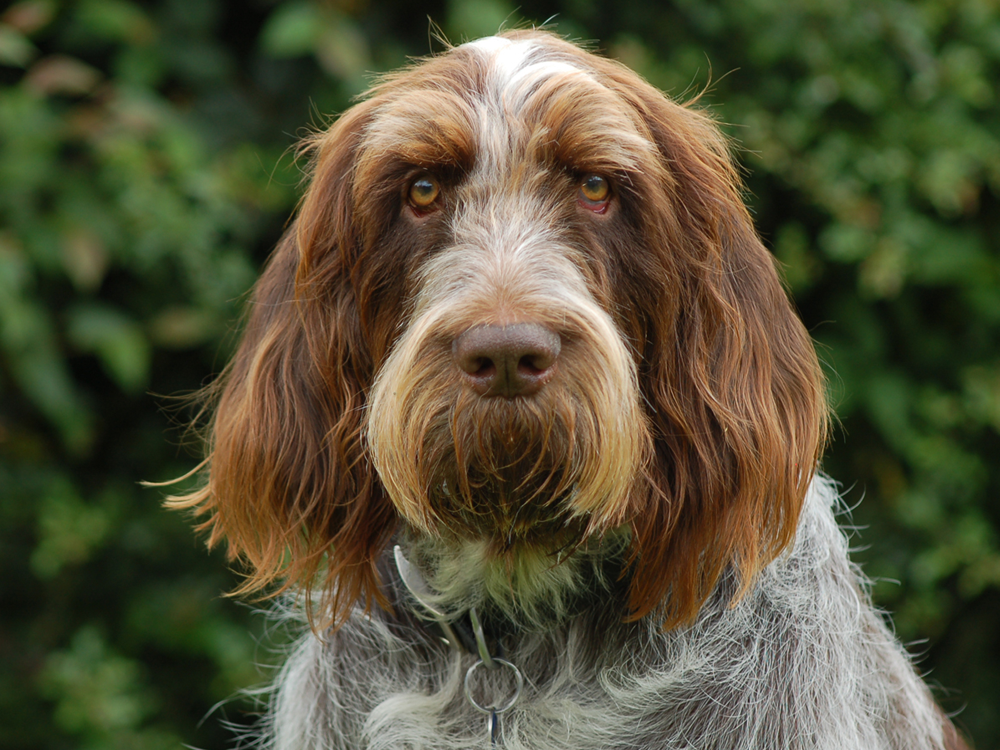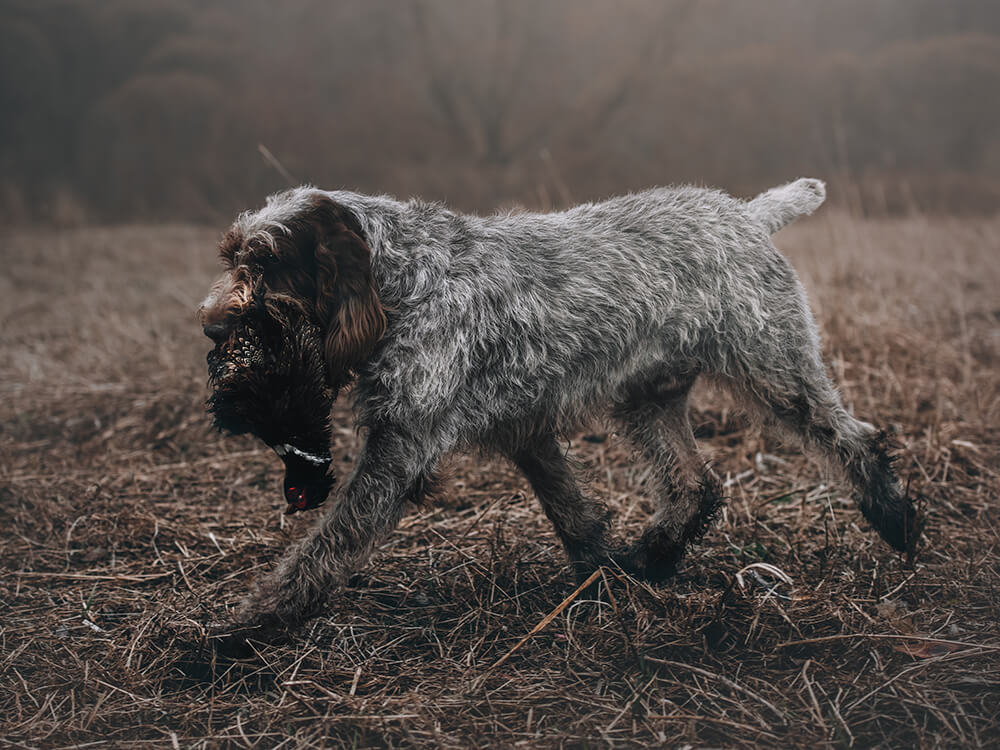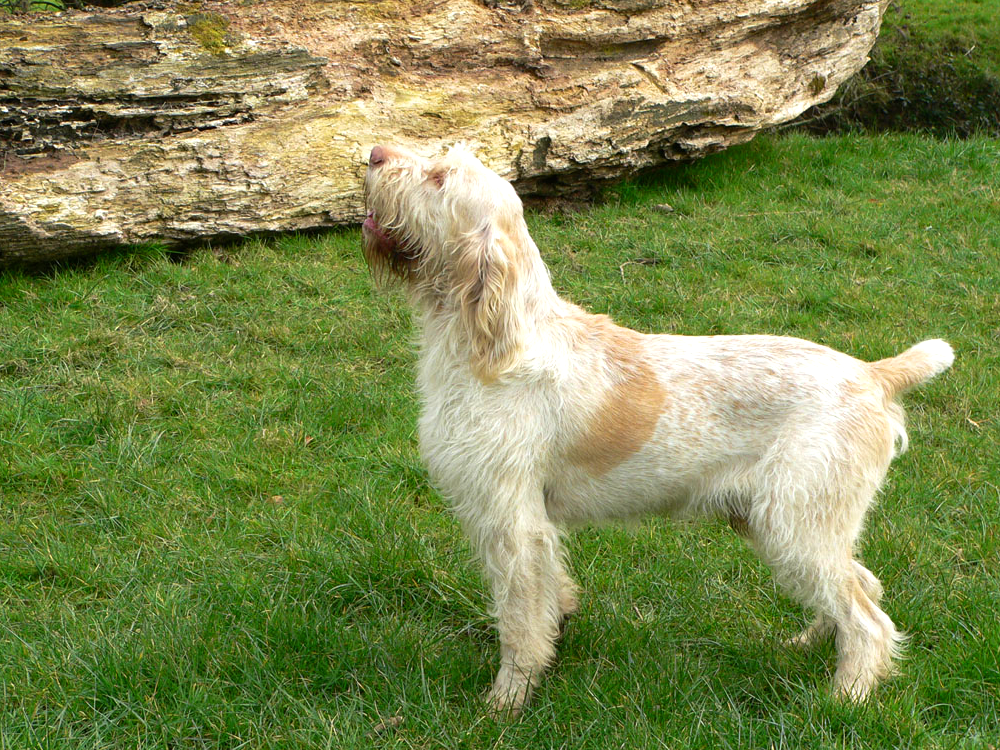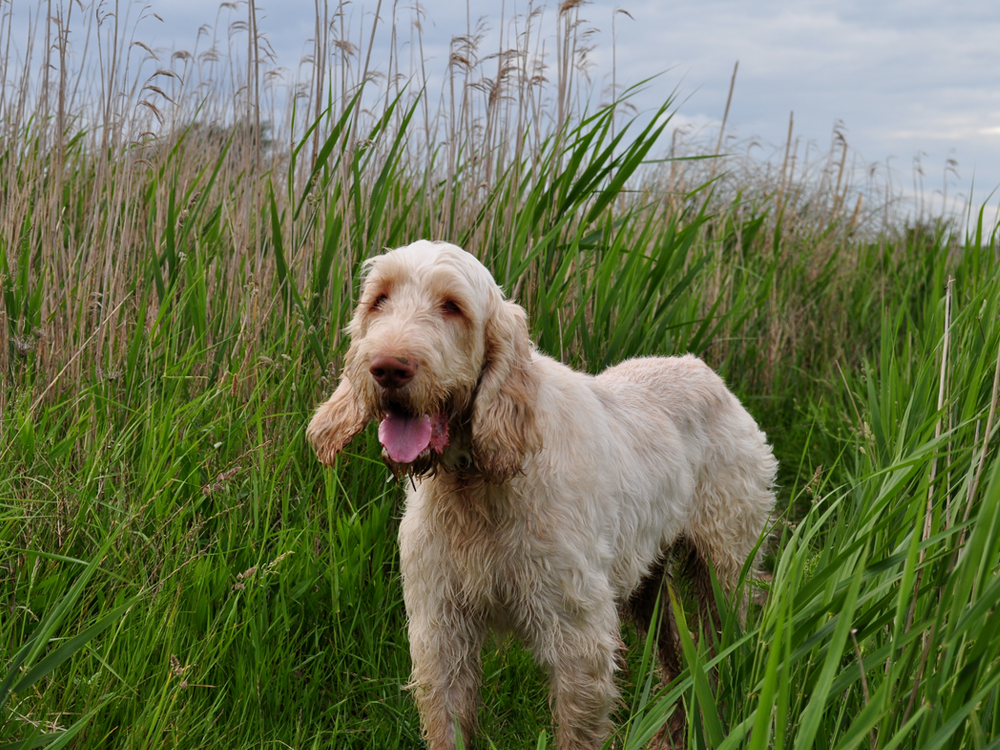
Italian Spinone Breed Pictures
Vital Breed Stats
| Height: | 60 - 70 cm M | 59 - 65 cm F |
| Weight: | 34 - 49 kg M | 29 - 34 kg F |
| Breed Group: | Gundog Dog Group |
| Life Expectancy: | 11 - 14 years |
| KC Registered: | No |
Breed Characteristics
| Size: |  |
| Grooming: |  |
| Exercise Level: |  |
| Trainability: |  |
| Barking Level: |  |
| Good with Children: |  |
| Good with other pets: |  |
| Affectionate: |  |
| Protective: |  |
| Cost to Keep: |  |
Give a thumbs up if you love the Italian Spinone

0
More About the Breed
History
The exact origins of the Italian Spinone are unclear except for the fact that it originated in Italy and is one of the most ancient breeds in the world. Some believe that it was developed from Italian hounds that were crossed with the Barbet and the French Griffon. Others claim that it descended from the Segugio Italiano, a hound that was around since the Middle Ages.
The main purpose of Italian Spinones was to accompany hunters as they excelled at pointing and retrieving. The breed flourished in its home country because of its great working abilities and personable and fun-loving characteristics. It only found its way to the UK in the 1990s, gaining a champion status in 1994. Albeit gradually gaining popularity outside Italy, the breed remains rare. It is recognised by The Kennel Club under the Gundog group.
Appearance
The Italian Spinone was developed as a hardy and robust gundog that could adapt well to any terrain. With an average weight of 64 to 86 pounds and height of 58 to 70 centimetres, it is squarely built dog of solid construction. It may be a large dog but it has an endearing look due to its human-like expressions. It has an oval-shaped head with a pronounced occiput and well-defined median furrow. It has large roundish eyes that are set well apart on its face, which can be in different shades to match its coat. It has pendulous triangular ears that are slightly rounded at the tips and are covered in dense hair. It has a large and spongy-looking nose that boasts wide-open nostrils.
Spinones have a thick and leathery close-fitting skin covered with a coarse, dense and flat coat. Completing its charming appearance are thicker and longer hair in its eyebrows, as well as its moustache and beard. In addition, the hair on the backs of their legs is a rough brush but without fringes. According to KC standards, the accepted colours are white, white and brown, brown roan, white and orange, and orange roan.
Grooming
Italian Spinones have moderately high grooming needs. They do need to be hand stripped twice a year by a professional groomer to keep the coat in top condition and easier to maintain. In between visits, keeping their coats clean and tidy is quite easy as it only takes brushing twice or thrice a week. Brushing becomes frequent during spring and autumn when they shed more. They can be bathed as needed, about four times a year because they are relatively clean dogs although they have a musky smell, which isn’t necessarily unpleasant. Moreover, moustaches and beards need to be washed and dried or wiped with a damp cloth daily after eating to ensure they are kept clean. Hair on its toes and pads also need to be trimmed regularly.
Apart from its coat, also check your Spinone’s ears as too much wax build-up can cause painful infections that are challenging to clear up. Its nails should also be trimmed regularly since overgrowth can be painful and annoying for your dog. Lastly, promote healthy oral hygiene by brushing its teeth twice a week and giving it dental chews regularly.
Temperament
Intelligence
It is worth knowing that Italian Spinones are dogs known to slobber and snore. They thrive in the countryside with big areas they can freely run in. That being said, this breed should live indoors with its family and should not be left alone or it will be destructive. It needs to be in a home where one person is always left behind when everyone else is out because it suffers from separation anxiety. Well-socialised Spinones get on well with other pets especially those they grew up with.
This highly intelligent breed can be trained easily as it is generally biddable. Training should start early so rules and boundaries are set especially that it takes time for Spinones to mature. Being an energetic breed, training must always be interesting because it needs mentally stimulating activities to be truly happy.
Nutrition
Understanding the basic nutritional needs of breeds is important, there is no one-size-fits-all approach in dog nutrition. Feel free to consult your veterinarian regarding its nutritional needs.
Typical calorie needs of adult Italian Spinones per day:
- Senior and less active: up to 1,580 calories daily
- Typical adults: up to 1,780 calories daily
- Physically active/working dogs: up to 1,900 calories daily
Feeding
Health
Exercise
Cost of Ownership
Raising an Italian Spinone is not an easy task especially when you talk about the financial challenges that come with it. However, since it is a rare breed in the UK, you have to be on a waitlist, giving you enough time to save up or weigh your options. The price to buy a well-bred pedigree puppy does not go lower than £900 or £1,200. The average monthly cost of owning a Spinone is between £80 and £100.
Here is a rough breakdown of the expenses:
- Food and treats - £60 to £70 a month
- Initial equipment and supplies - £250
- Insurance coverage - £15 to £25 a month
- Routine veterinary trips - £1,000 per month, excluding long-term treatments or major surgeries in case of accidents or illnesses
Is an Italian Spinone Right for You?
- The Italian Spinone is a placid and laidback dog at home.
- It has high exercise needs, requiring at least 2 hours a day.
- It has moderately high grooming needs, benefiting from occasional trips to the groomer’s for hand stripping.
- It is a great breed for new dog owners given that they can provide for their high exercise needs.
- It tends to drool and snore.
